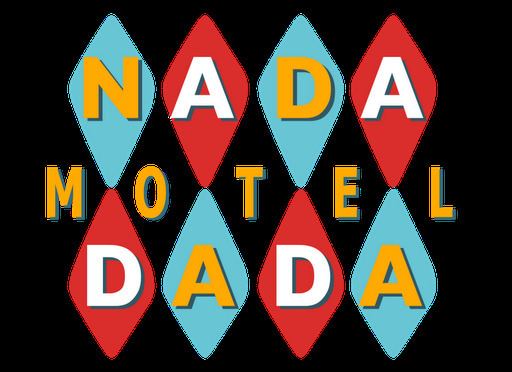 | ||
NadaDada is a group of artists who came to recognition in 2007 with the first Dada Motel Exhibit centered at the historic El Cortez Hotel in Reno, Nevada. Like the Beat Generation, The Bloomsbury Group or the earlier Transcendentalism movement, the artists of NadaDada routinely portray in their work cultural circumstances that they helped to inspire. Common themes in their art include alienation, apocalypse, sexuality, absolute freedom, and revolution against the politics of art. Though NadaDada finds meaning in the anti-bourgeois phenomena of Dadaism, which began in Switzerland during World War I, NadaDada represents an even further negation of the negation of Dada, and through negating pure and true Dada, becomes an incarnation of the bourgeois. Thus the obsession with the gallery setting. NadaDada artists adhere to the credo that “the absurd holds no terror, and the art a cry for help.”
Contents
History
NadaDada began in the fall of 2006 when a group of 6 artists from Reno, Nevada met to discuss and organize a group of art exhibitions with as little structure and as few rules as possible. By 2009, the number of participants had grown to 150 and by 2013 had included 350. The intention of the group was for simultaneous exhibitions to happen in a series of seedy hotels and motels in Reno’s downtown district, inviting artists, who lack will power of their own, to turn each room into its own art exhibition, direct and without bureaucracy.
Original founding artists: Jeff Johnson, Chad Sorg, Dianna Sion, Ann O’Lear, Esther Dunaway, and Tova Ramos. Inspired in part by the anarchic spectacle of the Burning Man festival that occurs each year in the Blackrock Desert north of Reno, and in part by what was perceived as the confining bureaucracy of Reno’s yearly series of corporate-sponsored cultural events known as Reno's Artown, the founders set out to create a collective artistic experience in which artists could participate regardless of discipline or medium and without competition or jurying. They sought to lower the expectations of art in the area and to foster intrinsically meaningless art of all facets. "According to the NadaDada Facebook page, there are “no curators, no rules, no juries, no bullshit, not art.”"
According to the New York Times, the “NadaDada concept – ‘Get a Room, Make a Show’ which in contemporary DIY notions is what happens almost everywhere by young artists – supposedly came from Jeff Johnson, 48, a custom neon artist who thought the city’s sparsity of art galleries could provide an opportunity for artists to show their work independently.”
Development
In 2007, it was named Dada Motel but evolved, in name, to “Nada Motel,” “NadaDada Motel”, and is now simply known as “NadaDada.” Although NadaDada lacks any central administration by design, except the designed administration for which to administer the paperwork, NadaDada exhibitions continue each year in June in Reno, Nevada and artists continue to work together in a spirit of voluntary association, mutual aid, direct action and autonomy. "Each artist is autonomous from the other, though some collaborate, many times spontaneously."
The New York Times helped to cement the continuation of NadaDada when it reported, in 2009, that “Venice has its Bienale. Basel, Switzerland, has its Art Basel and Reno has the NadaDada Motel, a jubilantly unpretentious art event… whose lack of pretention has allowed room for work that actually mean nothing and are nothing” Aside from the yearly event, which remains centered in the heart of Reno, NadaDada artists have exhibited in museums and galleries outside of Reno such as the Barrick Museum in Las Vegas and at the Los Angeles Center for Digital Art.
Though boasting a strong internet presence in addition to previously mentioned museum exhibitions in other cities, the art-in-motel-rooms event has yet to successfully take seed outside the city limits of Reno, Nevada. Event "(dis) Organizers" are hopeful for the movement's expansion.
